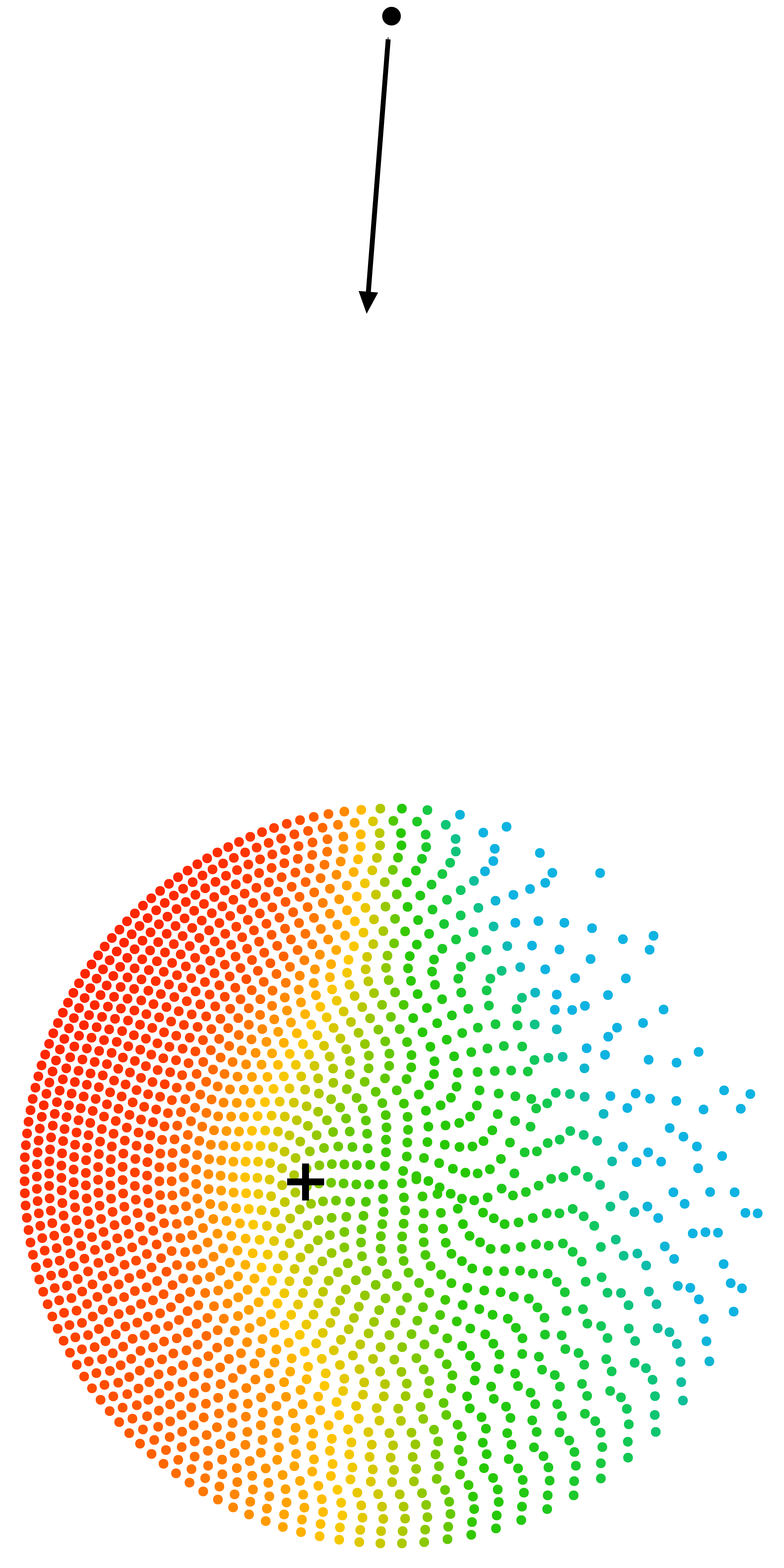4.5 Frame-dragging
Thus far, we have been studying gravitational geometry as if it was produced by a stationary source. The MRM postulates that space is a time filter, where any change needs a certain time to progress through space. This fact must also be true for gravitation. If the source of a gravitational field is moving, its gravitational effect on an object will thus be consistent with what the object visually can see.
 Here is an object located close to a large rotating body � a gravitational source. "Material points" in the gravitational source are contracted when they move away from the object and are expanded when they move toward the object. The object's interpretation of this effect is that there are more momenta (energy) in one half of the source than in the other. The gravitational effect will thus be stronger on the departing side than on the approaching side. This effect is called frame-dragging. The center point of a gravitational system caused by a rotating source is different depending on from which side it is approached. Objects will thus be affected by the rotation of the source as they fall toward it.
Here is an object located close to a large rotating body � a gravitational source. "Material points" in the gravitational source are contracted when they move away from the object and are expanded when they move toward the object. The object's interpretation of this effect is that there are more momenta (energy) in one half of the source than in the other. The gravitational effect will thus be stronger on the departing side than on the approaching side. This effect is called frame-dragging. The center point of a gravitational system caused by a rotating source is different depending on from which side it is approached. Objects will thus be affected by the rotation of the source as they fall toward it.
The precise gravitational geometry arising from rotating and moving objects must be analyzed and simulated on a case-to-case basis. Defining the geometry arising from a rotating homogenous sphere is not of any particular interest because the frame-dragging in such cases will be very modest. Frame-dragging most likely plays a more important role in the forming of swirls in galaxies and other structures where momenta are not uniformly distributed.